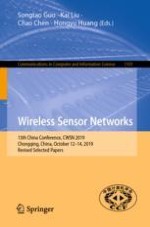2019 | Buch
Wireless Sensor Networks
13th China Conference, CWSN 2019, Chongqing, China, October 12–14, 2019, Revised Selected Papers
herausgegeben von: Songtao Guo, Kai Liu, Prof. Chao Chen, Hongyu Huang
Verlag: Springer Singapore
Buchreihe : Communications in Computer and Information Science
